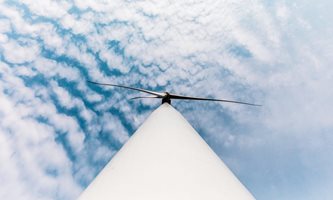Wind Wildlife Research Fund announces 2021 research projects: Addressing risk, minimization strategies for wind energy and wildlife
As part of the continued effort to invest in critical research, the Wind Wildlife Research Fund is announcing support of three new research projects beginning in 2021. These new initiatives focus on understanding bat interactions with wind energy, as well as continued support for three ongoing projects that started in 2019 and 2020. Since its inception in 2019, the Fund has secured a total of $2.75 million – including $ 1 million raised for 2021 – in investments from more than 30 renewable energy companies representing almost 70 percent of the installed wind capacity in the U.S.
The Fund, managed by the American Wind Wildlife Institute (AWWI), is a unique industry-led initiative that pools resources to advance independent peer-reviewed research on impacts and solutions for wind energy and wildlife. The Fund plays a key role in advancing sustainable renewable energy buildout by supporting robust scientific research on critical wind-wildlife issues.
“Finding solutions to these challenges is essential to reducing greenhouse gas emissions from the U.S. energy sector by enabling the rapid expansion of wind energy while also protecting wildlife and conserving vital habitats,” explained Joy Page, Director, Renewable Energy & Wildlife at Defenders of Wildlife and Vice Chair of AWWI’s Board of Directors. “Wind energy currently provides approximately 8.5 percent of U.S. electricity, and reducing carbon emissions 80 percent by 2050 will require expanding the nation’s wind energy capacity at least five-fold. This growth has to be paired with expanding the body of credible, applicable science about how to avoid, minimize, or mitigate adverse impacts, especially on priority species.”
In 2020, the Fund performed a state-of-the-science assessment of the risk wind energy poses to bats. Fund leaders identified a critical priority: gaining a better understanding of the ways in which bat species interact with operating wind facilities in order to improve strategies for reducing risk. In 2020, the Fund released a Request for Proposals on this topic, and following an independent review, Fund leaders selected three research projects that will evaluate:
- The ratios of male vs. female bat fatalities at operating wind farms to inform minimization strategies;
- The relationship between the passage of weather fronts and hoary bat collisions at operating wind farms to develop a tool that predicts periods of increased collision risk;
- And the use of acoustic data for predicting and managing periods of increased risk exposure for bats at operating wind farms.
In addition to these new research projects, the Fund is continuing support for three projects on birds and bats that started in 2019 and 2020. These continuing projects are evaluating:
- The relationship between turbine size and bat and bird mortality;
- The accuracy of eagle mortality estimation and modeling;
- And the response of lesser prairie-chickens to wind energy development.
Since 2019, the Fund has published technical reports on landscape-level factors associated with risk for bats and an initial report on grouse response to wind energy development, as well as a peer-reviewed article on bat activity and fatality rates.
In keeping with its commitment to sustainable growth and environmental stewardship, the wind industry has embraced the urgent need for scientific research on these and other critical issues.
“Advancing wind-wildlife research will continue to be important as we strive to attain our nation’s clean energy goals. The Fund exceeded our 2021 goal and raised over $1 million for research, which demonstrates the wind industry’s commitment to applying science-based solutions to wind-wildlife issues,” observed Kyle Boudreaux, Corporate Environmental Services at NextEra Energy and Chair of the Fund Advisory Council. “The value of this effort lies in leveraging the collective expertise and resources of our members to accomplish things no single company could achieve on its own.”
“Fund research is aligned with priorities identified by AWWI’s research plan,” said Garry George, Director, Clean Energy Initiative at National Audubon Society and Co-Chair of the AWWI Research Committee. “The research results are distributed widely to inform wind energy siting and operation, state and federal agencies, and wildlife and land conservation NGOs.”
The Fund’s activities and priorities are guided by an Advisory Council composed of the Fund’s major contributors and aligns with AWWI’s National Wind Wildlife Research Plan. To learn more about the Fund, contact AWWI Executive Director Abby Arnold at [email protected].

